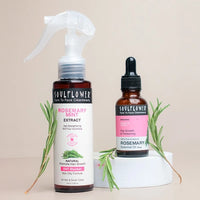Vitamin D is a vital nutrient for maintaining strong bones, supporting the immune system, and promoting overall well-being. Our bodies naturally produce vitamin D when our skin is exposed to sunlight. However, concerns have been raised about the potential impact of sunscreen on vitamin D absorption. In this article, we will debunk the myth surrounding sunscreen and vitamin D, providing a clear understanding of how to protect your skin while maintaining optimal vitamin D levels.
The Importance of Vitamin D and Sunlight
Vitamin D plays a crucial role in maintaining healthy bones, teeth, and muscles. It helps our bodies absorb calcium and phosphorus, essential minerals for bone strength. Sunlight is a primary source of vitamin D, as ultraviolet B (UVB) rays interact with the skin, triggering the synthesis of vitamin D3. However, it is essential to strike a balance between sun exposure and protecting the skin from harmful UV radiation.
Sunscreen: Friend or Foe?
The common misconception is that sunscreen completely blocks UV rays, hindering the production of vitamin D. However, the reality is more nuanced. Sunscreen is designed to protect the skin from both UVA and UVB rays, reducing the risk of sunburn and skin cancer. While it filters out a significant portion of UVB radiation, some rays still penetrate the skin, allowing for vitamin D synthesis.
Understanding SPF and Sunscreen Efficacy
Sun Protection Factor (SPF) is a measure of a sunscreen's ability to block UVB rays. Higher SPF values indicate greater protection. However, it is important to note that no sunscreen can completely eliminate UVB penetration. Even an SPF 30 sunscreen filters out about 97% of UVB rays, leaving a small percentage of UVB exposure for potential vitamin D synthesis.
The Vitamin D Myth Debunked
Clinical studies have consistently shown that regular use of sunscreen does not lead to vitamin D deficiency. The remaining UVB rays that penetrate the skin, even with sunscreen, are sufficient to trigger vitamin D production. Additionally, other factors, such as the duration of sun exposure, individual skin type, and geographical location, also influence vitamin D synthesis.

Finding the Right Balance
To strike a balance between sun protection and vitamin D synthesis, consider the following recommendations:
- Sun Exposure: Spend brief periods of time (around 5-30 minutes, depending on your skin type) in the sun without sunscreen, preferably during off-peak hours when the sun is less intense. Expose larger skin areas, such as the arms, legs, or back, to maximize vitamin D synthesis.
- Sunscreen Choice: Select a broad-spectrum sunscreen with an SPF of 15 or higher to ensure protection against UVA and UVB rays. You can try Soulflower Broad spectrum sunscreen with SPF 50+ which is enriched with turmeric and aloe vera. Apply sunscreen generously to exposed skin and reapply as directed, especially after swimming or excessive sweating.
- Dietary Sources: Incorporate vitamin D-rich foods into your diet, such as fatty fish (salmon, mackerel), fortified dairy products, egg yolks, and mushrooms. If necessary, consult with a healthcare professional to assess the need for vitamin D supplements.
- Professional Guidance: If you have concerns about your vitamin D levels or are at a higher risk of deficiency, consult a healthcare provider. They can evaluate your specific needs and provide personalised recommendations.
The belief that sunscreen entirely hinders vitamin D absorption is a myth. Scientific evidence consistently supports the effectiveness of sunscreen in protecting the skin while allowing for adequate vitamin D synthesis. By adopting a balanced approach to sun exposure, using sunscreen appropriately, and incorporating vitamin D-rich foods into your diet, you can maintain optimal skin health and vitamin D levels. Remember, protecting your skin from harmful UV radiation is crucial, and sunscreen is a valuable ally.











